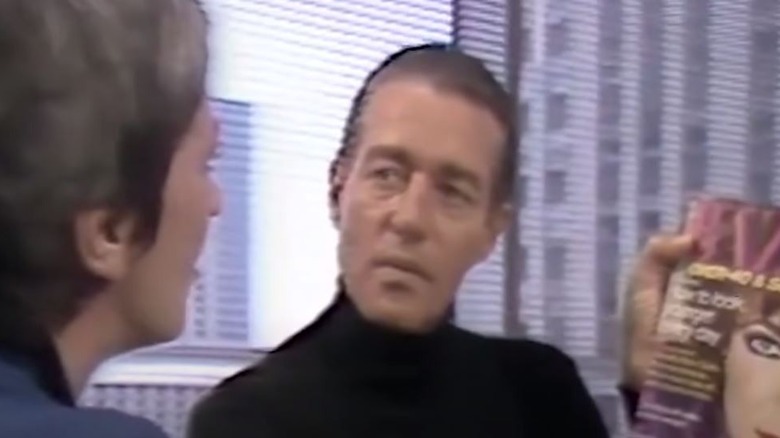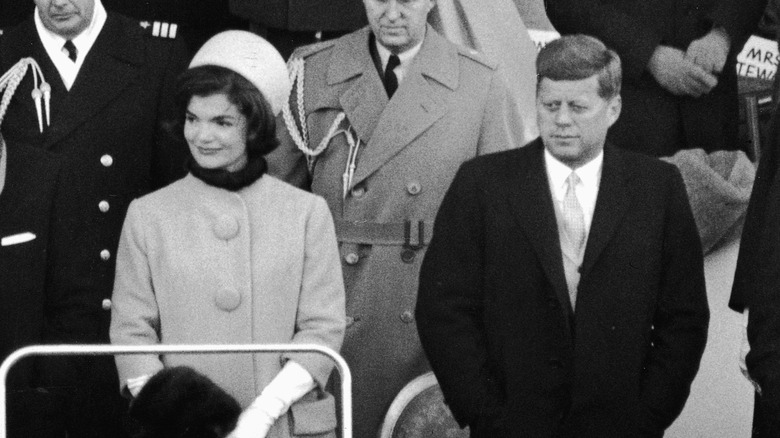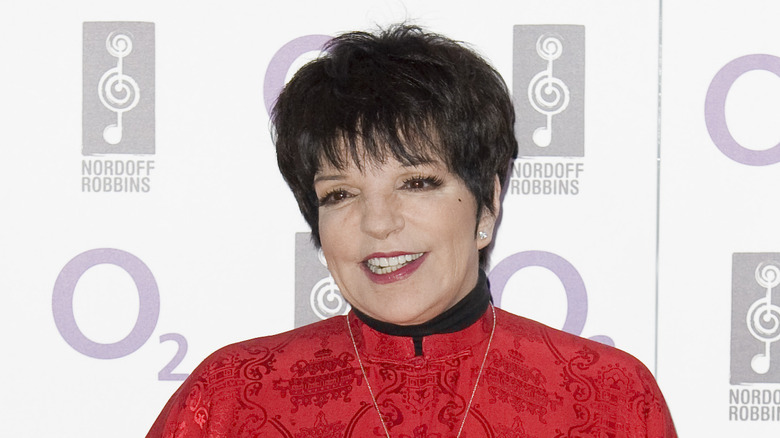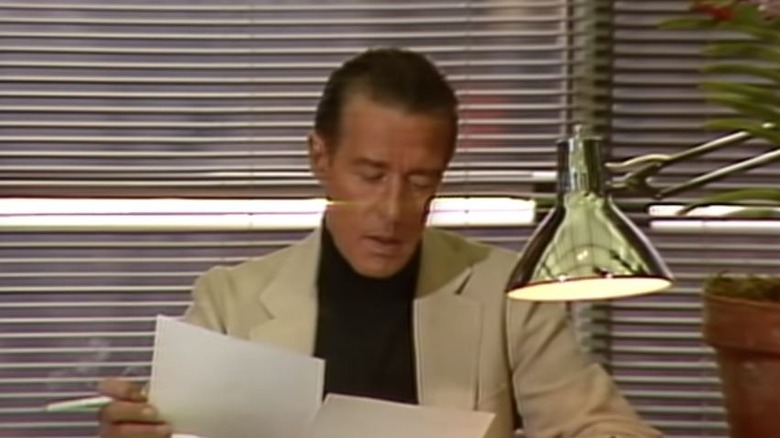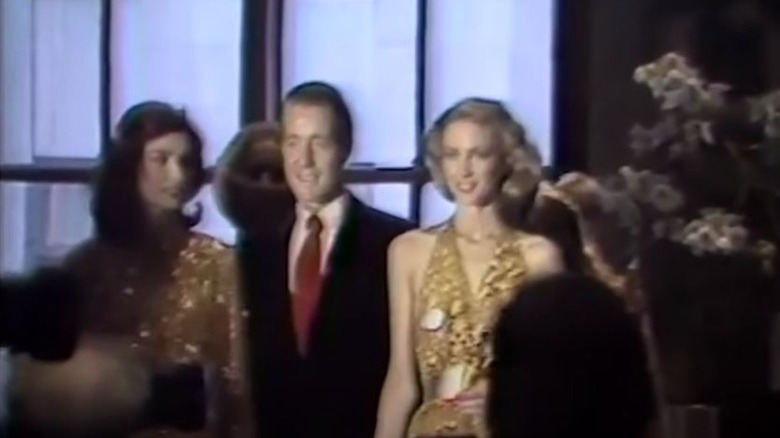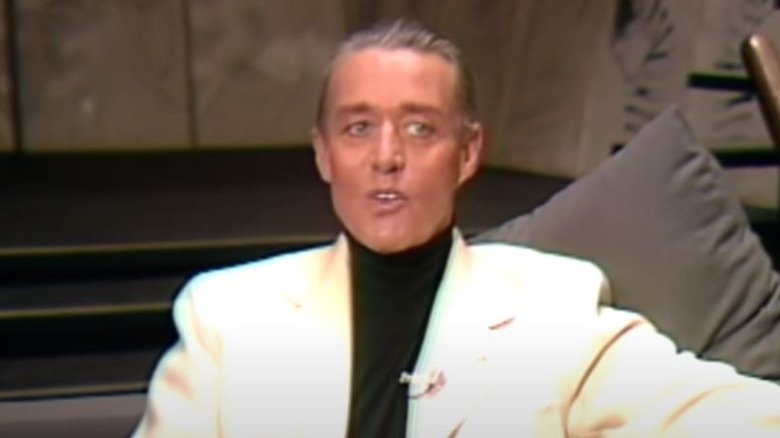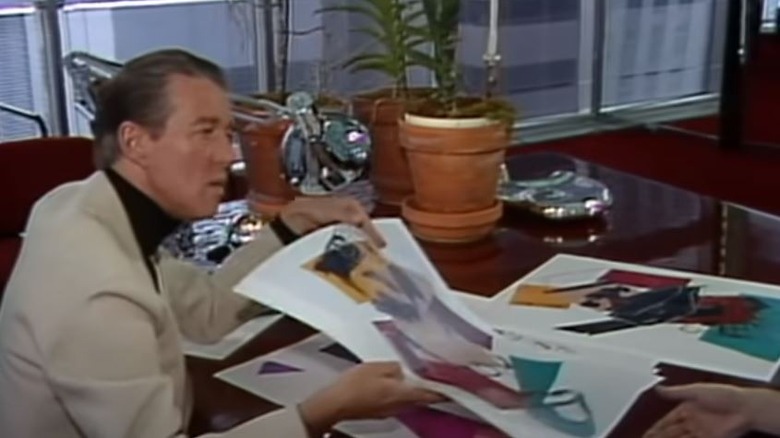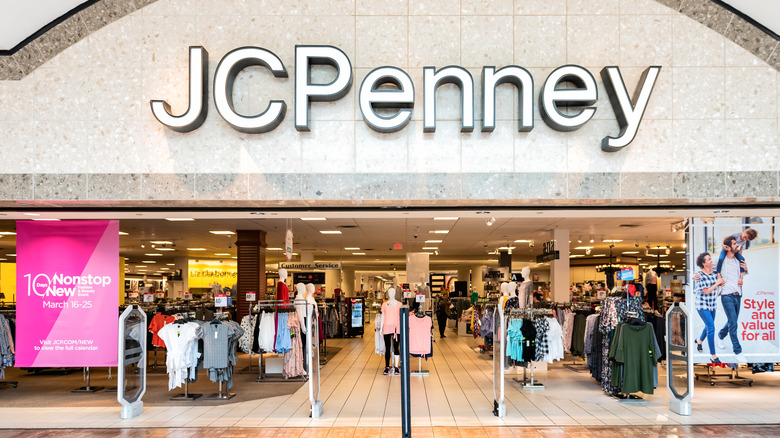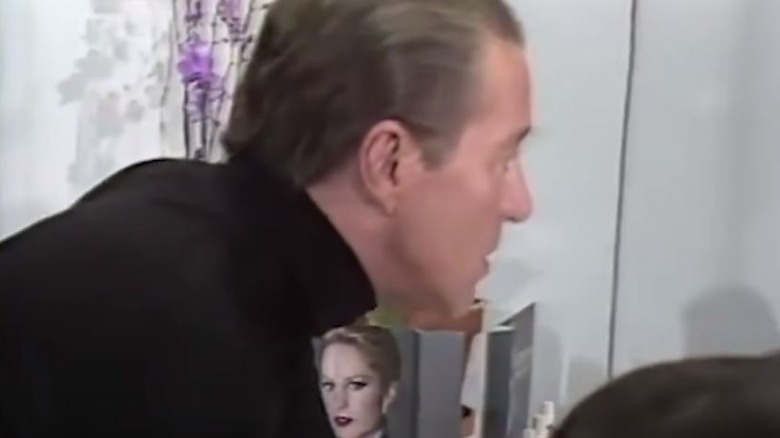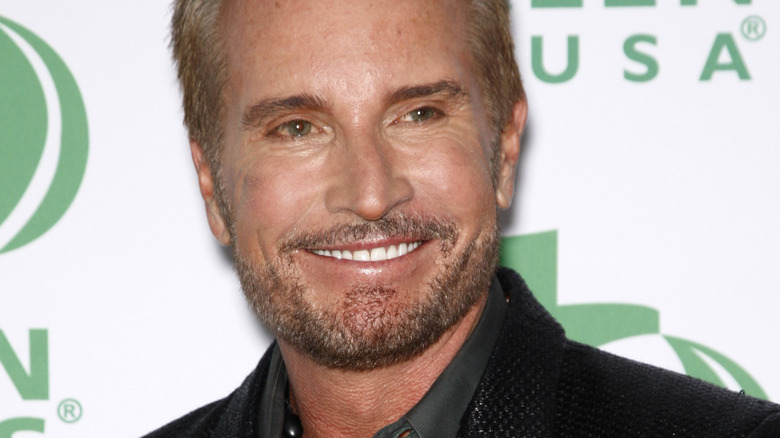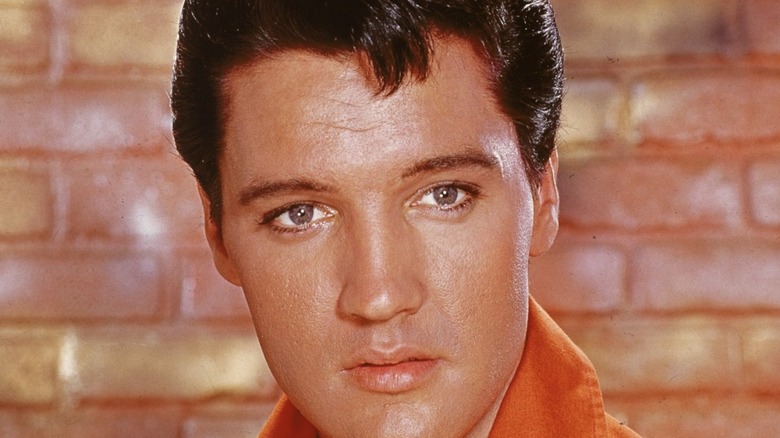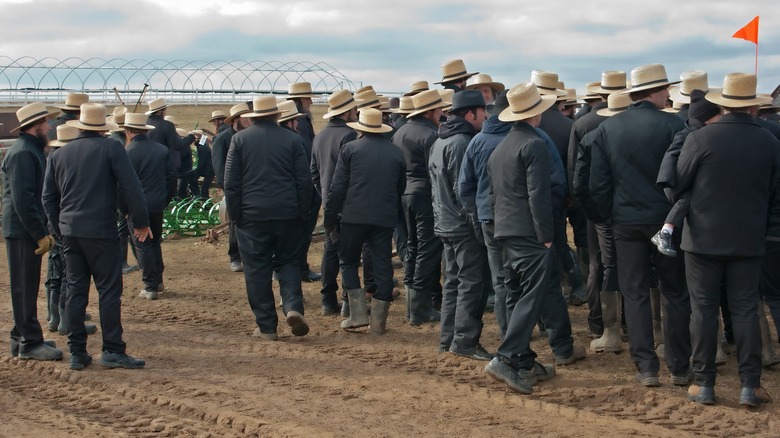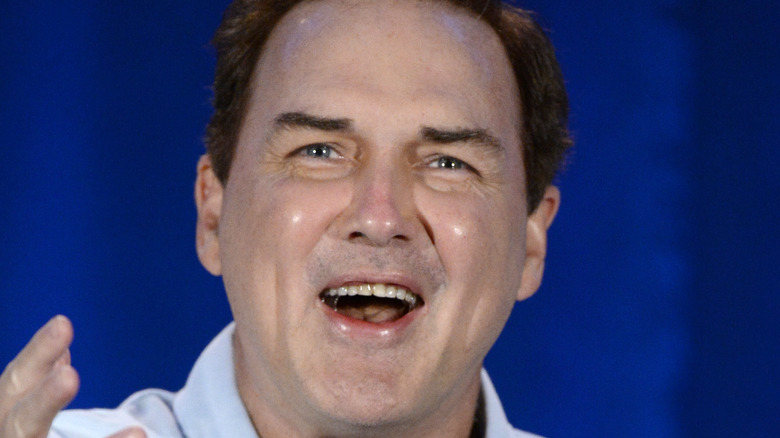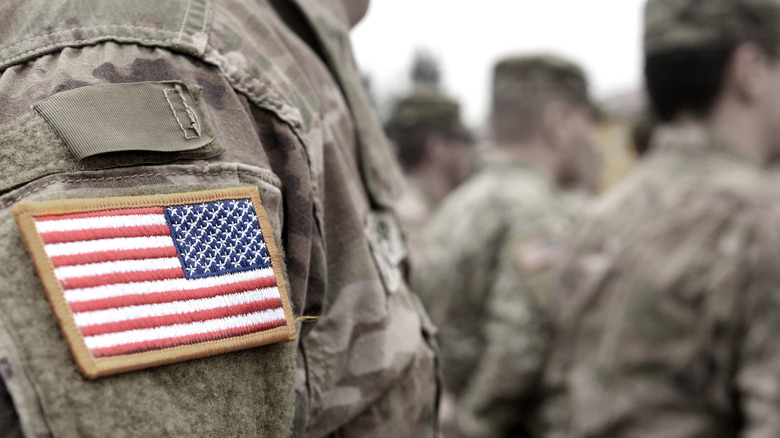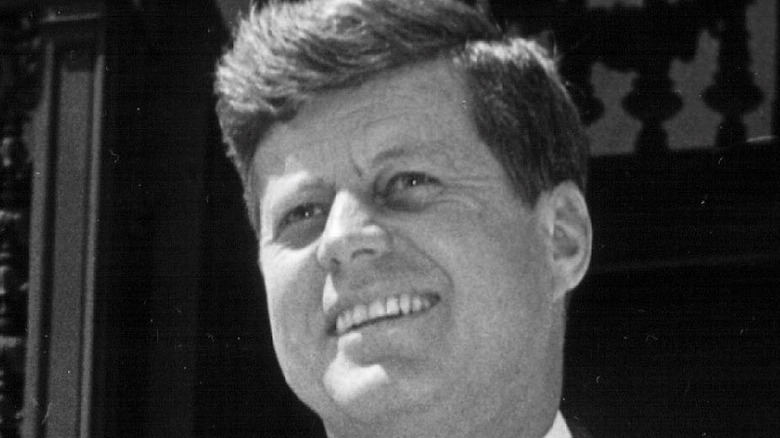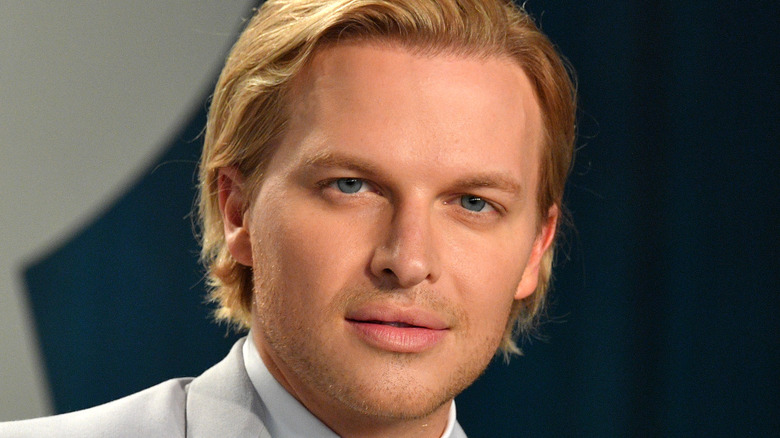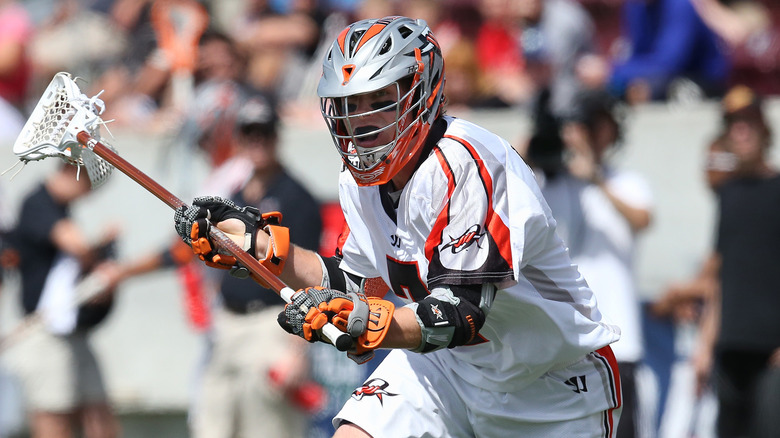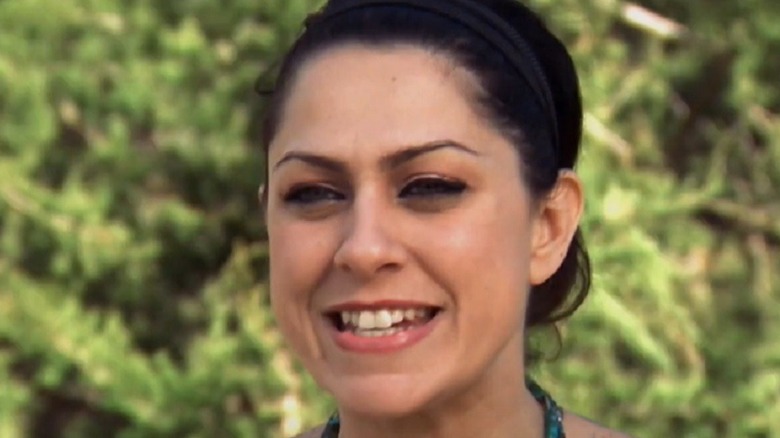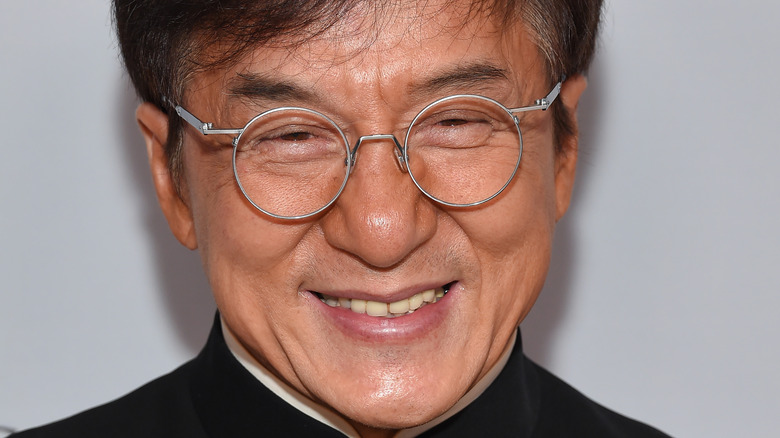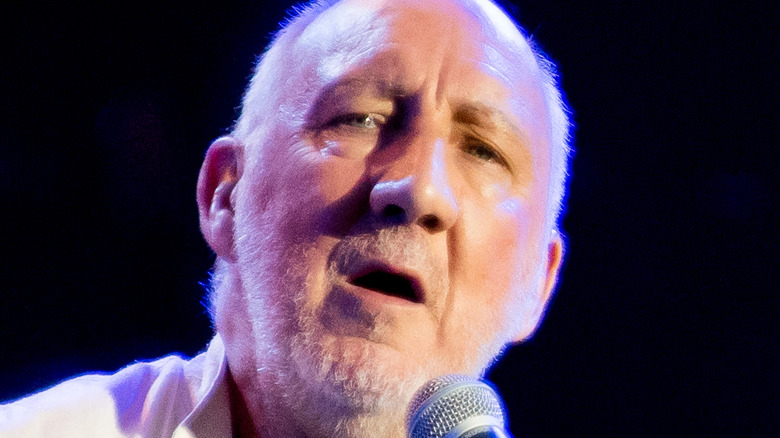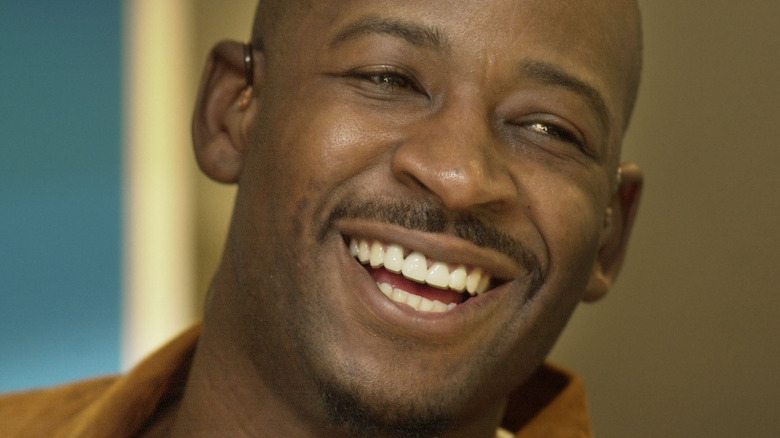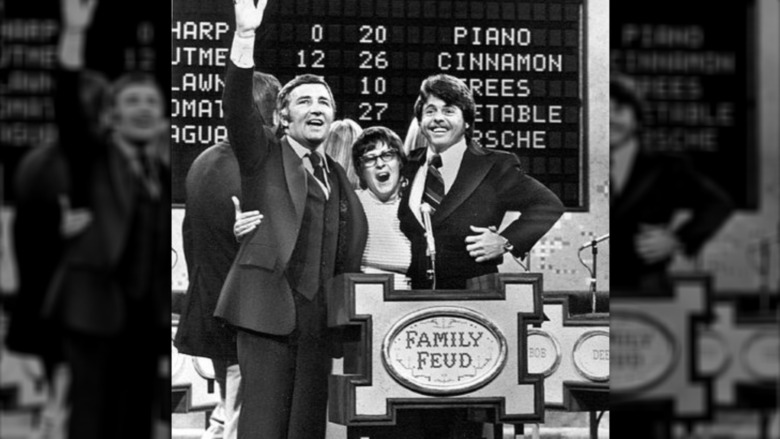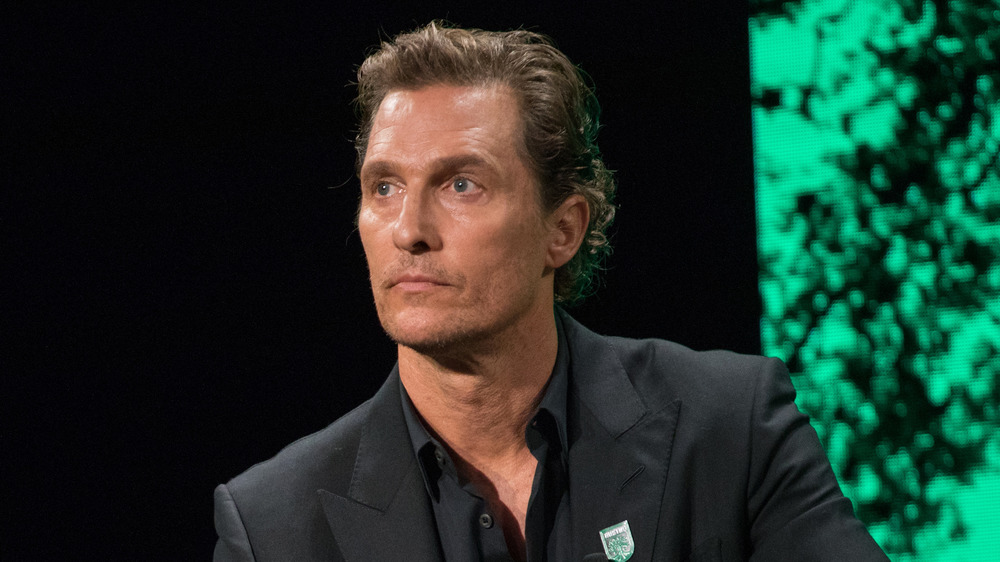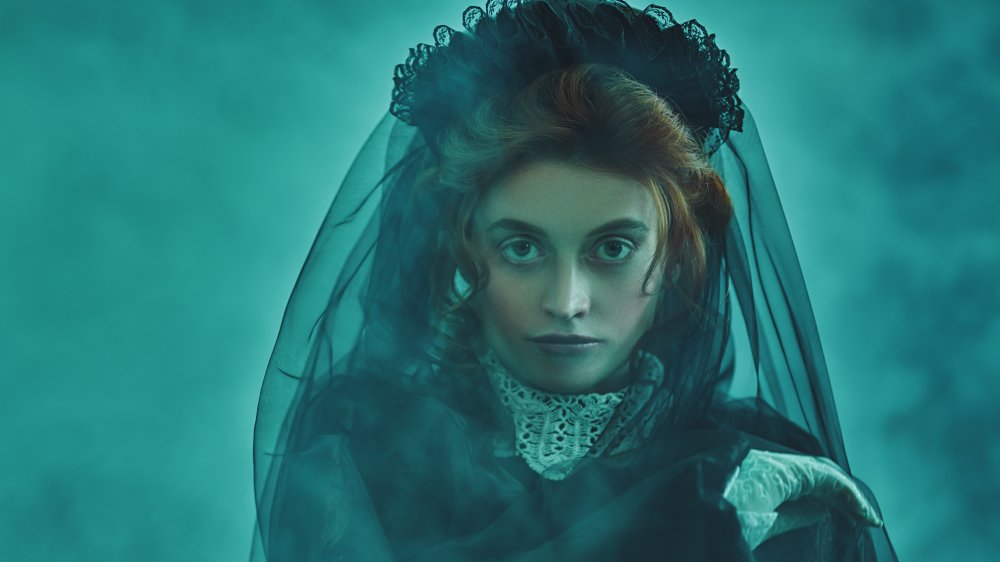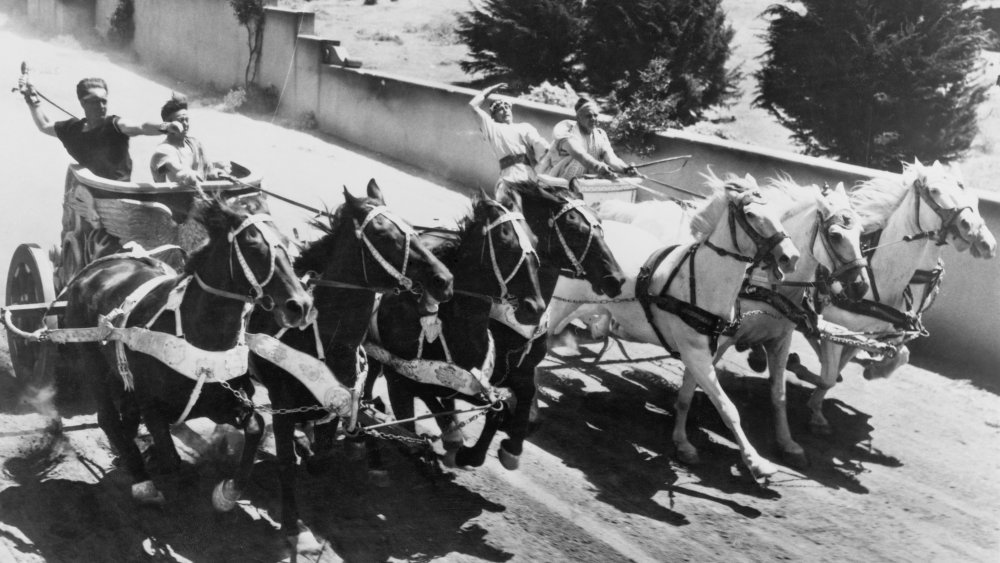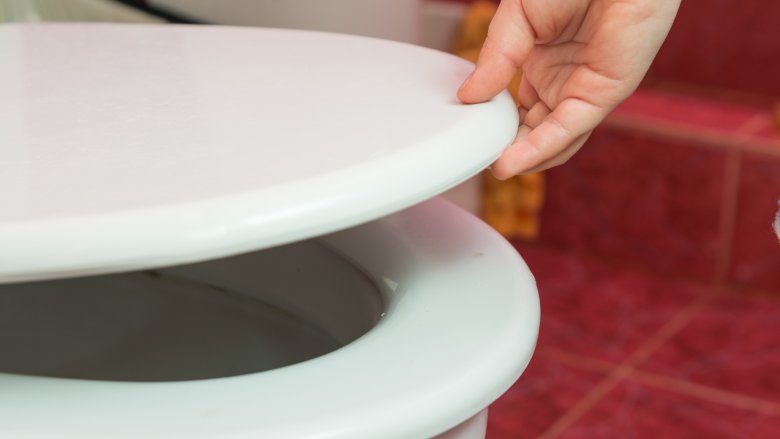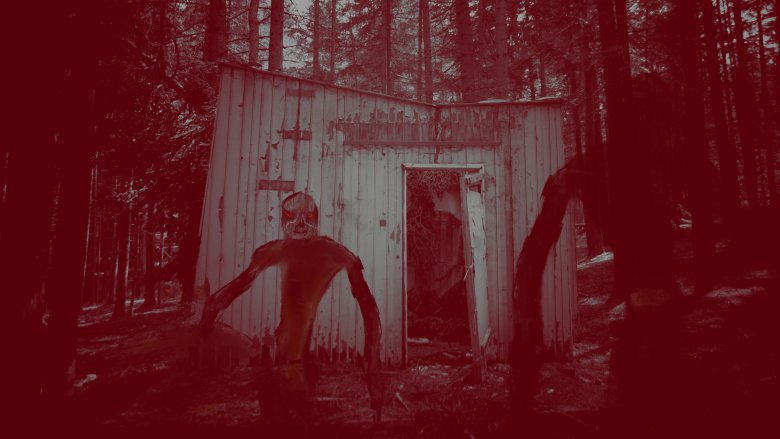
The Untold Truth Of Halston
There are many different levels of fame, but it’s probably fair to say that when you’re universally known by just one name, you’ve well and truly made it. These mononymous celebrities include globally notorious artists like Madonna and Adele, as well as the occasional historical character like the writer and philosopher Voltaire (via Encyclopedia Britannica). One of the most curious one-named famous folks out there is Halston, the famed fashion designer who made his name with a host of gorgeous, sleek dresses in the 1970s (per Biography). Halston’s full name was Roy Halston Frowick, and his designs were an iconic part of one of the most notorious eras in the history of American celebrity antics: the heyday of the iconic Studio 54.
Halston might not be as immediately recognizable as someone like, say, Rihanna, but rest assured that the man was huge in his heyday. Both Halston’s designs and the designer himself were incredibly famous, even though his personal excesses ultimately stood between him and even greater glory. The famed designer was recently introduced to a brand new generation of fans by the Netflix miniseries bearing his name, in which Ewan McGregor portrays Halston. Yet, the real Halston led an even stranger rollercoaster of a life, and before his untimely death in 1990, he saw a number of history-making victories and crushing defeats. Today, we take a look at some of his finest hours and lowest moments. This is the untold truth of Halston.
Halston's early days
Every legend has to start somewhere, and as Biography tells us, Halston discovered early on that fashion was his passion. He was born in 1932 in Des Moines, Iowa, and grew up in Indiana (per Vogue). Even as a child, he modified and even made clothes for the female members of the family. However, the young man’s wild nature almost sabotaged his career early on. In the 1940s, he was kicked out of high school because he’d taken a road trip to Florida.
Though he briefly drifted from job to job, Halston eventually picked up where he left off, wrapped up high school, and enrolled at Indiana University. His artistic nature soon took him from the Midwest to the Art Institute of Chicago, where he studied while working at the Carson Pirie Scott department store.
According to Town & Country, Halston initially specialized in women’s hats, and became a highly sought-after milliner, to the point that in 1953 the young designer already had a shop of his own. However, Chicago was only the beginning of Halston’s illustrious career. His next destination was New York, where he relocated in 1958 for a milliner gig with the illustrious Lily Daché, later moving to a position with the esteemed European fashion retailer Bergdorf Goodman. He considered this part of his work history particularly educational, and it gave him many connections within the city’s elite. “I learned about fashion at Bergdorf’s,” Halston later said.
Halston and the strange case of Jackie Kennedy's pillbox hat
Biography notes that Halston’s work with the Ultrasuede material or his famous halter dress design are among his most iconic work, but if you count hats, there’s no question about his single most famous creation. Per InStyle, Halston designed Jacqueline Kennedy’s famed pillbox hat, which she wore for John F. Kennedy’s inauguration in 1961. Halston was still working at Bergdorf Goodman at the time, and the fact that he was behind one of Mrs. Kennedy’s most famous fashion statements was naturally a massive boost to his reputation. Halston knew well that the task was monumental, and as the hatter’s assistant at the time, Tom Fallon, later revealed, he took it extremely seriously (per Vanity Fair). “Before the hats were sent to her, Halston would put them on his head and sit there and look at them with two mirrors, one behind him and one in front, turning his head at different angles to make sure they looked right,” Fallon described the process.
Ironically, this intense preparation still didn’t stop the hat from suffering an amusing accident (via Vogue). “It was made too small for her,” Halston later reflected. “But Mrs. Kennedy wore it anyway. When a gust of wind threatened to topple it from her head, she dented it hanging on to the hat. The Seventh Avenue copycat hat makers reproduced the design by the thousands so accurately that each pillbox had a dent in it.”
Halston and Liza Minelli
Halston’s most famous celebrity client — as well as a close, personal friend — was without doubt Liza Minnelli, who met the designer in 1966 (per Vogue). As Vanity Fair tells, the pair became a fixture in the nightlife and social events of the 1970s and the 1980s, and Minnelli has frequently referred to Halston as her best friend. There was very little the two wouldn’t do for each other, and Minnelli has many stories about the sheer lengths that Halston was prepared to go for her — such as the time he painstakingly designed and decorated a large apartment for her and her husband, just because she mentioned that she found the idea of doing it herself daunting.
Professionally, Minnelli exclusively wore Halston’s designs, and Halston could always rely on her to back him up wherever necessary … even long after the designer died in 1990. Per the New York Times, when the Halston brand made a comeback in 2008, Minnelli was sitting in the front row, and her name was the very first thing the article mentioned. Minnelli has called Halston “tender always, courageous always, challenging always, daring me to be better than I ever thought I could be. I’ll miss him always.” Because of their deep and unique connection, and her obviously peerless Halston expertise, Ewan McGregor specifically sought advice from Minnelli when he was cast to portray the designer in the Netflix show “Halston.”
Halston and Victor Hugo
Many tragic artist narratives require a perceived villain. The Beatles had Yoko Ono. The Queen biopic “Bohemian Rhapsody” casts Freddie Mercury’s manager Paul Prenter (played in the movie by Allen Leech) as the bad guy. The same, it turns out, applies to the story of Halston. As Vanity Fair notes, there are those who aren’t ready to attribute the designer’s ultimate downward spiral to his personal choices … at least, not the way you’d think. Though Halston’s other excesses presumably contributed, some feel that a sex worker known as Victor Hugo played a large part in the negative aspects of the designer’s life.
Halston met Hugo in 1972, and they started a relationship that lasted well into the 1980s. “It was pure lust. I think Halston had a life that was barren of romance and tenderness,” Halston biographer Steven Gaines has described the relationship. “Halston liked being humiliated and having the shock value of having Victor around,” he added. “It was a whole other side to Halston…. Halston liked to be on the shocking end of things.”
Hugo fit that label, all right. His copious drug use and constant shock tactics involved things like destroying Andy Warhol paintings by spray-painting over them. Even after their physical relationship ended, Hugo was known to steal from Halston to fund his own hedonistic lifestyle. “That Venezuelan call boy was his downfall,” Halston’s acquaintance, André Leon Talley, mused on Hugo’s effect on the designer to the New York Times.
Halston was well ahead of his time
Halston started dealing with his stress with an opulent party lifestyle when Studio 54 opened in 1977, as Vanity Fair notes. While his disco-era excess may have somewhat overshadowed his legacy as a designer, there are those who argue that it shouldn’t be so. “I think in a way we’ve been misled by the chaos of the Studio 54 scene to not think as highly of Halston as we should,” director and chief curator Valerie Steele of the Fashion Institute of Technology has said to the New York Times. “I think he was one of the great designers.”
Fortunately, it appears that the inevitable passage of time has washed away the memories of Halston’s negative traits, and as the Guardian tells us, multiple professionals now think very highly of his work. They recognize that both his approach to design and his tendency to use an early form of “influencers” by getting famous folks to wear his clothes were well and truly ahead of their time. Per the Fashion Institute of Technology, Halston even had his own brand ambassadors in the form of the so-called “Halstonettes” — a group of glamorous models who were rarely far from his side. These weren’t just any random ladies, either. The ranks of the Halstonettes included folks like the highly popular model Pat Cleveland (per the Guardian), and even the legendary Anjelica Huston herself.
Halston rocks the Battle of Versailles
The year was 1973, and as Harper’s Bazaar tells us, Halston joined four other American designers to duke it out with their French colleagues. Along with Anne Klein, Stephen Burrows, Oscar de la Renta, and Bill Blass, Halston was recruited to face off against the absolute best designers in France, and perhaps the world, at the so-called Battle of Versailles. As Town & Country reports, the get-together was the idea of fashion bigshot Eleanor Lambert, and was a massive society affair that featured world-famous celebrities like Princess Grace of Monaco, and Halston’s secret weapon Liza Minnelli, who also performed in the show.
The event took place in the legendary Versailles Palace, and to everyone’s surprise, the Americans’ sleek, relatively short and contemporary show blew the more traditional and pompous French part out of the water, leading to a unanimous victory. The Battle of Versailles was hardly a walk in the park for Halston himself, who brought an ego and a temper and clashed with a choreographer in a pretty dramatic fashion. However, he was part of a truly historic winning team, and his close friend Minnelli was also a crucial part of the show, so in the end, it was a clear win. This was no mean feat, seeing as the Americans faced top fashion names like Pierre Cardin, Yves Saint Laurent, and Hubert de Givenchy.
Halston the celebrity designer
The name “Halston” sounds a lot like a brand, and indeed, Biography has noted that Halston put in plenty of branding work. As The Cut tells us, the designer cultivated a very specific uniform, which revolved around a black turtleneck. “He opened his closet, and he said, ‘This is what I have,'” model Pat Cleveland described Halston’s approach to his personal style. “And you know what he had in there? The same outfit, boom, boom, boom. And then one red jacket. ‘This is my uniform,’ he said. ‘Then I don’t have to think about what to put on.'”
As Town & Country and Vanity Fair attest, Halston hobnobbed with A-listers all the time, thanks to the quality and popularity of his work. His outfits were highly sought after, and his shows were must-attend events that brought the rich and the beautiful together. Yet, Esquire tells us that fashion author, editor, and Halston acquaintance Hal Rubenstein feels that the ultimate component to Halston’s own legend was his refusal to bow down to the celebrities he worked with. “Other designers of that era became mixed with society, even though they worked in service to society,” Rubenstein said. “They weren’t regarded as equals. Designers were workmen, and Halston didn’t take to that. He decided that he was going to create his own little world, and he did.” The approach worked, and Halston is considered to be the first true superstar of the American design world.
Halston's controversial deal with JCPenney
Halston was a talented designer and a noted hedonist, but if you ask fashionistas what his most controversial move was, the answer may very well be his association with JCPenney (via Fast Company). Halston realized early on that he could capitalize on his name in a number of different ways, so he set up a number of mid-to-high end clothing enterprises. On one end of the scale, there was his highly exclusive custom-tailored work with A-list celebrities. On the other, department stores sold various Halston product lines with vastly differing price tags.
This approach may have made Halston a very pretty penny, but as The Cut notes, the fact that everything was tied to his name meant that the system left him vulnerable in a surprising way. In 1983, the designer signed what he described as “a one-billion dollar deal” with the decidedly midscale JCPenney chain, signing away the rights to the free use of his name in the process. Financially, the move may have been a solid one, and in more modern times, famous designers have been known to dabble in similar deals without losing their prestige. However, Halston was once again well before his time. His reputation took a massive hit, and high-end retailer Bergdorf Goodman wanted nothing to do with him anymore. Little by little, Halston’s prestige dripped away — and, as an insult to injury, some reports indicate that his JCPenney line didn’t even sell all that well.
The death of Halston
As Biography tells us, Halston was only 57-years-old when he died. Per Smooth Radio, the designer received a positive HIV diagnosis in 1988, at which point he left his East Coast haunt and moved to San Francisco in order to spend more time with his family. However, one of his complications turned out to be a cancer known as Kaposi’s sarcoma, and he passed away in 1990.
Halston’s obituary in the Los Angeles Times listed his numerous accomplishments, including his awards, notable fashion achievements, and the lucrative business deals that ultimately cost him a spot among the elite. However, arguably the most touching part of the piece was the comment from Halston’s heartbroken friend, Liza Minnelli. “I’m very, very saddened by this loss,” she said. “I just lost my best friend.”
The New York Times piece on the designer’s demise was a deeper cut into his significant influence in the fashion of the 1970s, noting that Halston was an important component when the industry moved on from the more garish fashion statements of the Swinging Sixties. The article reports a particular incident in 1971, when Halston took a look at the audience’s 1960s-style clothing shortly before he unleashed his own fall collection upon the unwary fashion enthusiasts. “Do you see that?” he asked, referring to the audience’s clothes. ”That is all finished — we’re on to something different.” Suffice to say, he spent his career doing just that.
The strange career trajectory of Halston's successor
Halston himself may have died in 1990, but as Biography notes, the designer had a penchant for licensing his name … and, as such, Halston the brand has kept going to this very day. As the New York Times tells us, the Halston licenses have worn many hats over the last few decades, with several different hopefuls attempting to revive the name. Arguably, the most spirited effort to live up to the designer’s name came in 1996, when new Halston owner Tropictex International recruited designer and longtime Halston fan Randolph Duke to spearhead the project. “I became a designer because of Halston,” Duke enthused. “He was the first superstar designer of the American gamine — a designer bigger than life.”
Duke’s first collection was a fairly acclaimed one, but unfortunately, his tenure with the company was short-lived. According to SF Gate, the designer left the building in 1998 to the tune of a $10.5-million lawsuit. “I am suing them for breach of my contract,” Duke commented. “I terminated my contract with them.” The company, meanwhile, argued that they, in fact, let him go. Per the Los Angeles Times, Duke — who later clarified that he left because the company had issues with payments to both himself and several suppliers — eventually moved on to the Home Shopping Network.
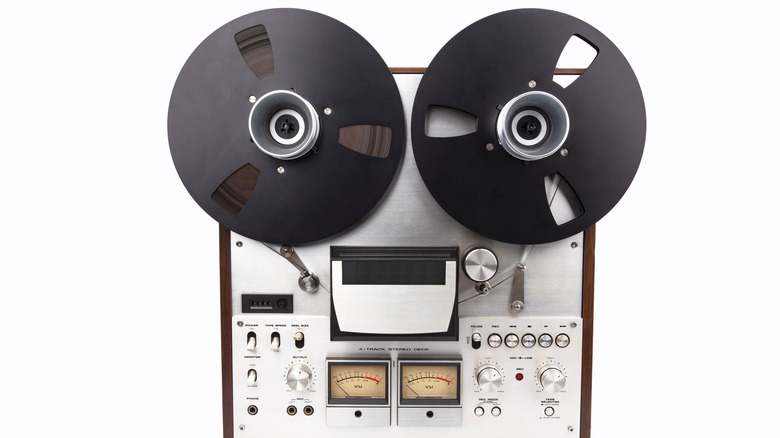
The Forgotten History Of The Reel-To-Reel Tape
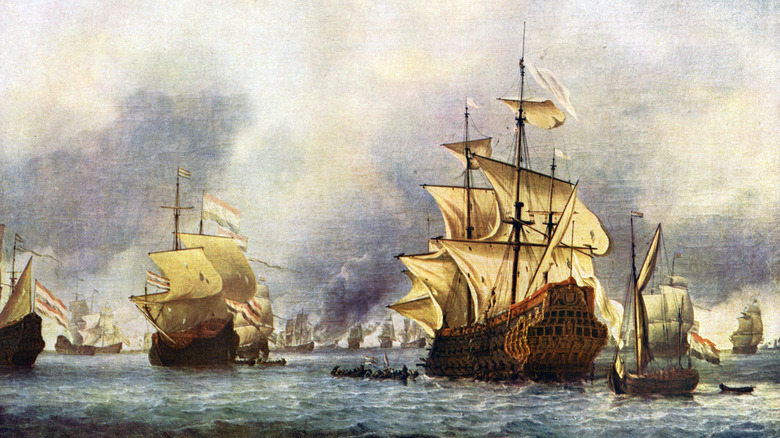
Here's How Many Shipwrecks Are Lost In The Ocean
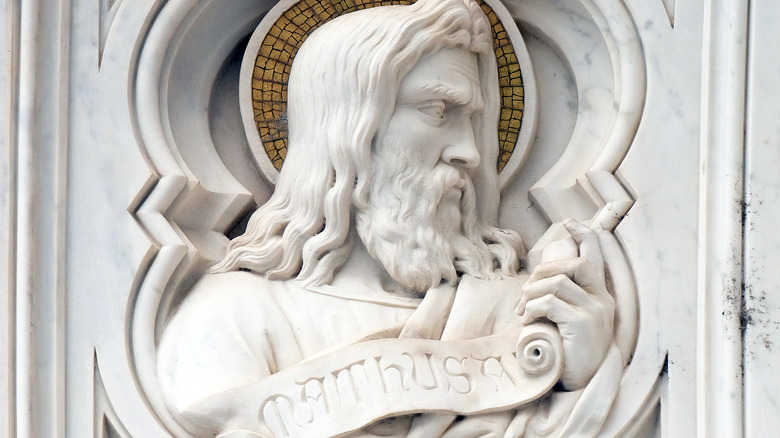
How Old Was Methuselah, According To The Bible?
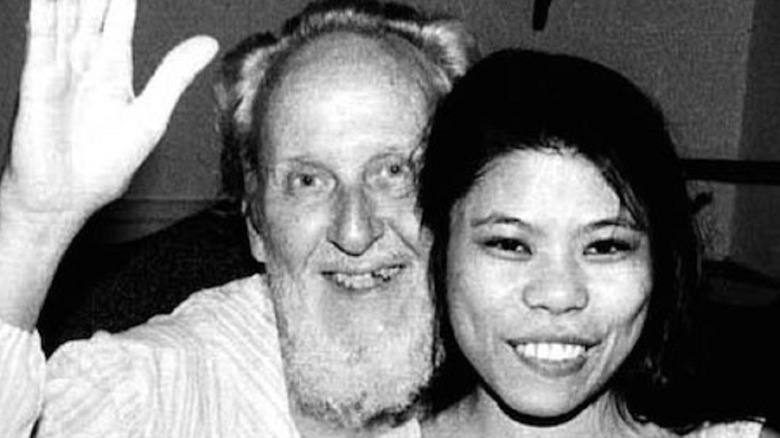
What Really Happened To Children Of God Founder David Berg?
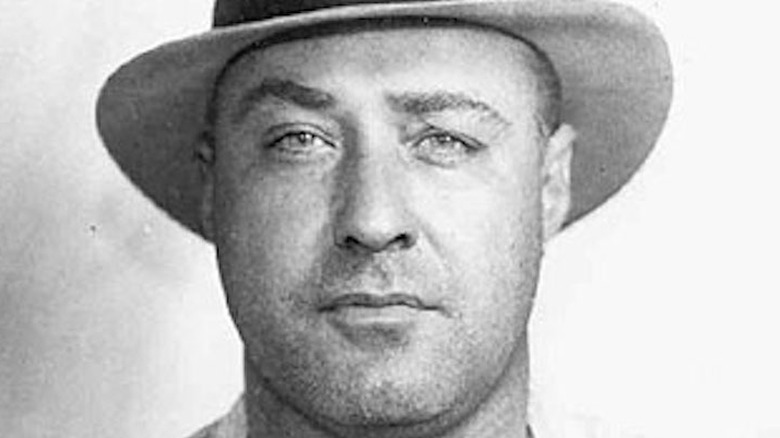
Kathryn Kelly: The Truth About Machine Gun Kelly's Wife
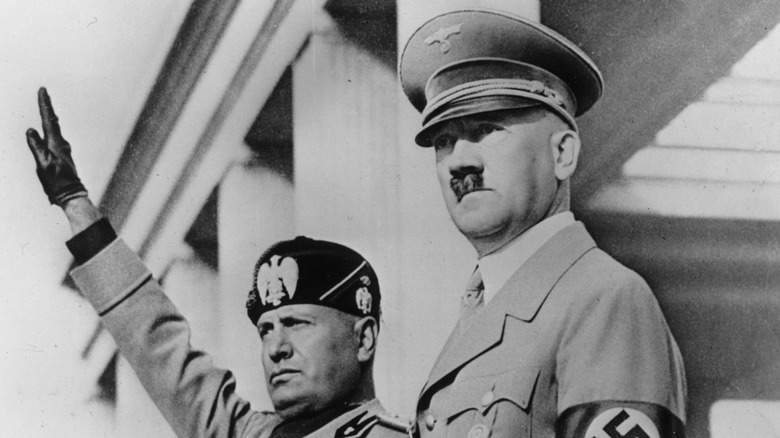
Here's What Happened To The Bodies Of These Dictators
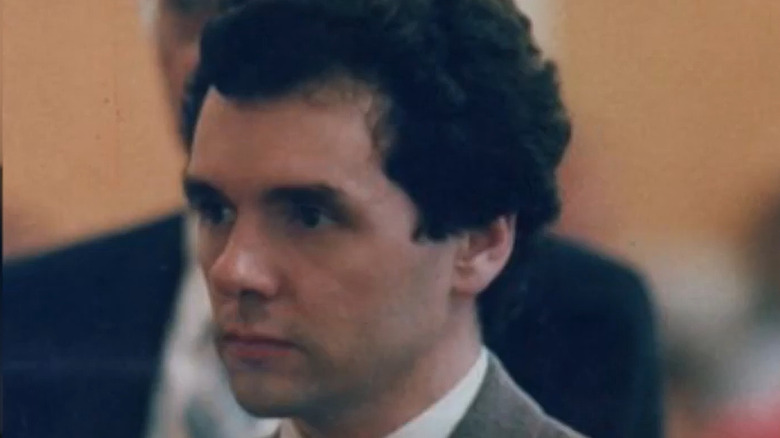
This Is When Donald Harvey Killed For The First Time
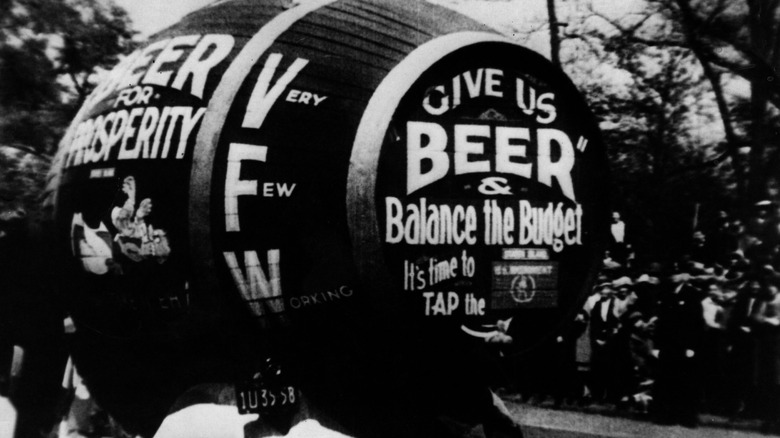
What It Was Really Like Being A Bootlegger During Prohibition
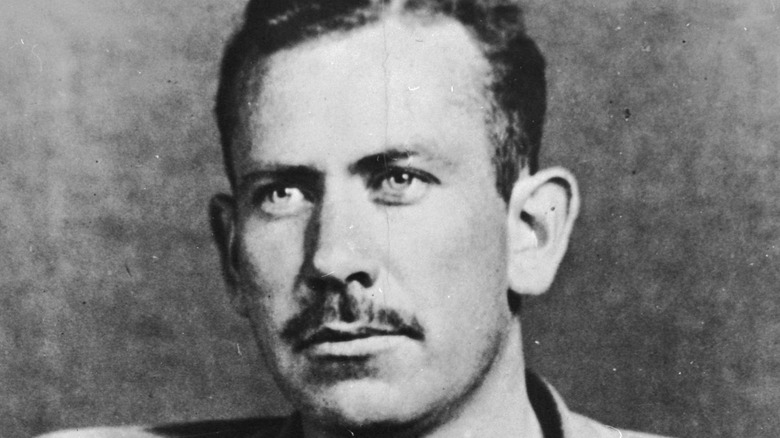
The Truth About John Steinbeck's Unpublished Werewolf Mystery
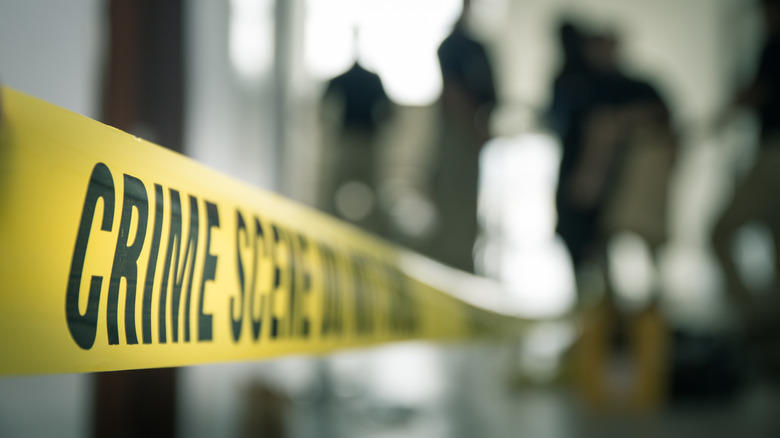
The Mysterious Murder Of Dorothy Jane Scott
